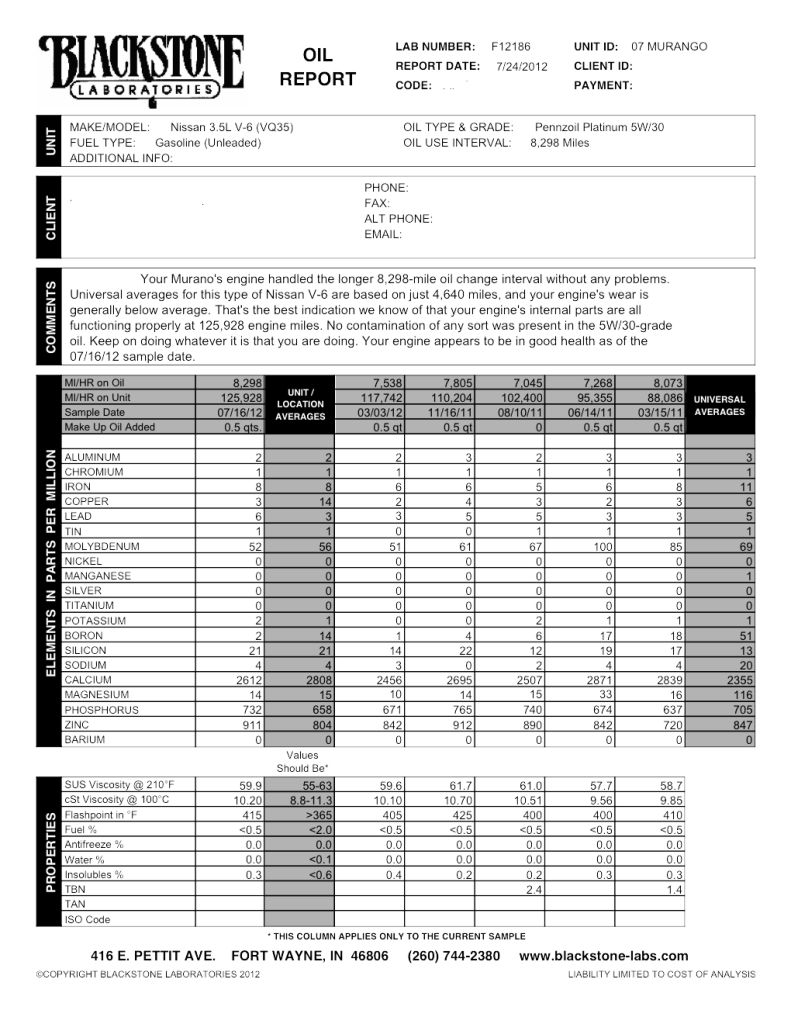Absolutely can also be a contributor to watch, yes.
The main components to TBN are the phosphorus, magnesium, calcium and boron. Probably are other minors but those are the majors. Of those, the Ca and Mg are also what help with detergency and dispersion significantly. That does not mean that an engine will immediately sludge up with a low TBN any more than it would be attacked acidically. The presence of something has to initiate the onset. TBN is low, but no acid present? Probably not a bid deal immediately. TBN is low and engine not known to be a sludger? Again - not a big deal in the short term. Engines typically sludge moreso due to a poor design characteristic when combined with really negligent maintenance. Excellent engine designs can tolerate some abuse well; sludgers can stay in good shape with anal-retentive practices. It typically takes BOTH to start mass sludge events. (That, or a big coolant leak to congeal the oil ... but that's a whole other topic).
If you had a low TBN count, and you did a lot of short trips where temps are cyclical year round, in a high moisture environment, and you were driving a known sludger (perhaps one of the infamous Toyotas) then I'd be changing oil with TBN perhaps at 2 or 3. But if not (and the Murano engine is not known for sludging) then TBN condemnation can go much lower, and here the wear and insolubules are showing us that the issues are under control.
I would also contend this; Amsoil is one of the premium brands that really is willing to stick it's neck out, and speak to just how capable they are. Most of their products (I'm being generic here) can run up to 2x or 3x the OEM OCI and still qualify for their well written warranty coverage with no UOA needed, in a normal application. Would I believe that their TBN were somehow more capable than some other premium synthetic product? After all, they do have some proprietary stuff, but Ca is Ca (Mg is Mg, Phos is Phos ...) when it comes to a UOA, right? How can they run their products up to 3x the OCI, with no UOA, and feel comfortable to warrant the practice? I suspect they know that TBN depletion is parabolic, and that low TBN is not an automatic cause for condemnation. Generally, the virgin counts of TBN on premium products is nearly the same, give or take a percentage point. An example would be the TBN of CJ-4 lubes; they are ALL around 10-10.5, so there is no real market advantage the Amsoil would have over, say, T6 or TDT. But Amsoil will warrant their oil, with no TBN or UOA test needed, up to 3x the OEM OCI in many cases. If they start at the same place, and use the same general additives, then how is it they can practically ignore TBN for 3x the OCI? Because they know it's not a sole condemnation point, and that the low TBN will not automatically manifest in some horrid condition. I'm not picking on Amsoil here; rather, I'm praising them for being pragmatic. They are using more logic than other brands. Mobil 1 EP is another one. We've seen gasser M1EP UOAs where TBN is very low, and the mileage is not yet at the "15k mile" imposed limit. How does Mobil warrant that without a UOA? Again, they realize that low TBN is not a sole condemation point. Together, two of the leading market producers of premium syns (Amsoil and Mobil) pretty much ignore TBN for extended OCIs, and yet still warrant the results. Yes, it WILL CERTAINLY be a point of contention at some point, but I'm trying to illustrate that it's probably a lot further down the road than some people would realize.
The main point I was trying to get across is that when wear is not affected, TBN should not be an automatic condemnation assurance. You have to look at all the other variables that intertwine with the potency of the lube brew. I'm not saying TBN isn't important; it certainly is. But it's not a reason to jump ship just because one number is low.
I'm not a tribologist. There are chemists here that can eloquently speak circles around my limited knowledge of chemistry. But I DO understand the statistical analysis precepts, and I can recognize evidentiary results, and interpret them.
And, we have no idea where the TBN is at on this UOA; it could be 3 or it could be zero. In fact, unless I missed something, are we PRESUMING all the previous runs were PP? Is this a solid series of consistent inputs, or a mish-mash of several different lubes? I don't know.
What I do know is that, regardless of what the TBN is, we see low wear rates, low total wear counts, very reasonable soot/insolubles, and controlled vis in an engine not known to be a sludger. Why not push this combination out a little bit further each time until you start to see a shift in one of the resultant wear factors?



